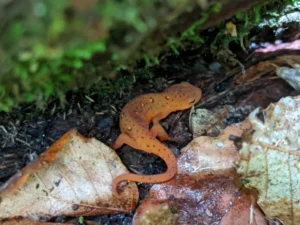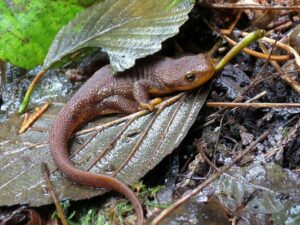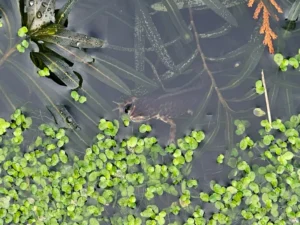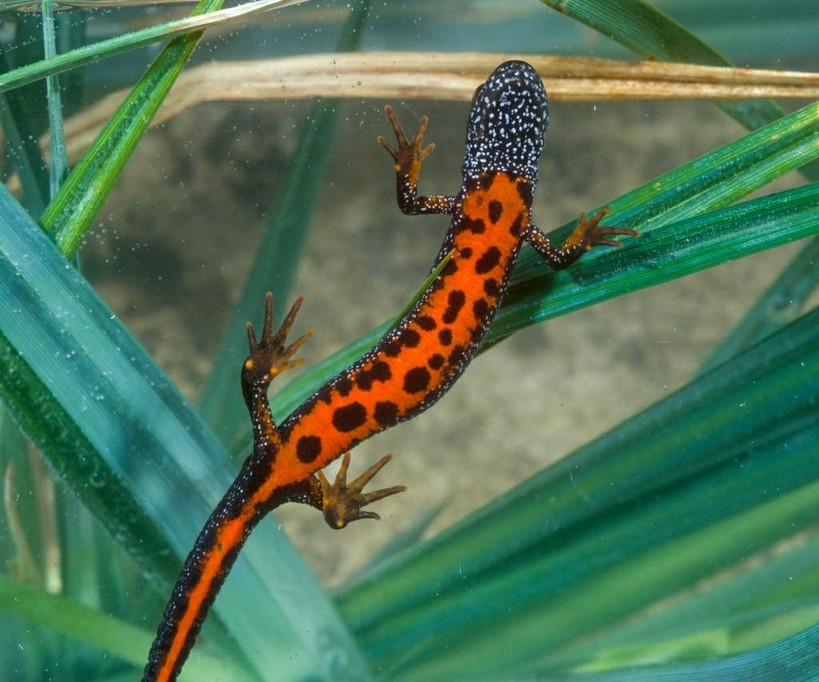You see a small newt slip across damp soil, its skin shining in the light. It looks delicate, almost harmless. But then you wonder, could it actually be dangerous? Do newts bite, sting, or release toxins? Are they safe for people, pets, and gardens?
Newts are harmless if left alone. They don’t bite aggressively, damage plants, or spread diseases to people. Some newts produce mild skin toxins to protect themselves from predators, but these toxins aren’t dangerous if you don’t put them in your mouth or handle them carelessly. For humans and gardens, newts are safe companions.
Do Newts Bite or Sting?
Newts don’t have stingers, and they rarely bite. Their teeth are tiny and made for gripping worms and insects, not for hurting larger creatures.

Even if a newt tried to bite, you’d barely feel it, it’s more like a soft pinch than anything threatening.
They rely on being careful, not aggressive. If threatened, they’re more likely to freeze, puff up slightly, or show bright belly colors to warn predators instead of attacking.
What About Newt Toxins?
Here’s where people sometimes worry. Many newts release mild toxins from their skin. These toxins protect them from predators like fish, birds, or mammals.
The rough-skinned newt in North America has one of the strongest amphibian toxins known as: tetrodotoxin.

But don’t panic, this isn’t a real threat to casual human contact. The toxin only matters if a predator tries to eat the newt or if someone does something careless like putting it in their mouth.
Simply touching a newt and washing your hands afterward is safe.
Think of it like a shield, not a weapon. The toxin makes predators spit them out, it doesn’t make the newt attack.
Are Newts Harmless to Humans?
Yes, if you treat them with care. Watching them in a pond, picking them up gently with wet hands, or observing them in a tank isn’t dangerous.
The only real risk comes if you forget to wash your hands and touch your mouth or eyes afterward. The toxin can cause mild irritation but not serious harm.
Compared to many animals, newts are among the least threatening.
Can Newts Harm Pets?
A curious cat or dog might try to pick up a newt. If the pet licks or chews the newt, the toxins could cause drooling, nausea, or vomiting.

In rare cases, it could be more serious.
The best way is to keep pets and newts apart. Newts aren’t aggressive, but their defense system isn’t meant for household animals.
In the wild, predators learn not to eat them quickly. At home, prevention is the safest approach.
Are Newts Harmless in Gardens?
Newts don’t chew plants, dig up roots, or eat vegetables. They snack on slugs, insects, and larvae. Gardeners often see them as helpers, not pests.
Imagine a damp evening in spring: a newt moves through leaf litter, snapping up tiny slugs before they reach your lettuce.
Instead of harming your garden, it quietly protects it.
Do Newts Spread Diseases?
Unlike some amphibians that carry chytrid fungus, newts aren’t known for spreading diseases to humans.
They don’t carry rabies, and they aren’t pests like rodents.
The main rule is simple: treat them carefully, wash your hands after touching, and don’t mix wild newts with pet tanks.
This keeps both humans and newts safe.
How Do Newts Defend Themselves Without Harming?
Newts use clever strategies that look threatening but don’t hurt people.
- Warning colors: Bright orange or yellow bellies say “don’t eat me.”
- Stillness: Freezing in place makes them hard to notice.
- Arching posture: Some lift their bodies to show off their warning colors.
To predators, these signals scream danger. To us, they’re interesting displays of survival without aggression.
Are Newts Harmless to Each Other?
Mostly, yes. Newts live peacefully together, especially in ponds.
During breeding season, males may nudge or wave tails at females, but serious fights are rare. They aren’t territorial like some reptiles are.

They may snap at smaller tank mates if food is scarce, but this is about hunger, not aggression. With enough space and food, newts stay calm and harmless to each other.
What About Children Handling Newts?
Newts can be safe for children to watch, but handling needs supervision.
Kids might forget to wash hands or squeeze too tightly. The rule is: look, don’t handle.
A small container with water lets children watch newts up close without stress or danger. This teaches respect for wildlife while keeping everyone safe.
Are All Newt Species Equally Harmless?
Most newts are harmless to humans, but some (like the rough-skinned newt) carry stronger toxins.
Even these don’t pose risks through casual contact. Unless swallowed, they stay a danger only to predators.
Smooth newts in Europe, fire-bellied newts in Asia, and eastern newts in North America are all safe for humans and gardens.
Why People Mistakenly Fear Newts
Some fear comes from the word “toxin.” Others confuse newts with lizards or snakes that people wrongly think are poisonous to touch.
But newts are shy, non-aggressive, and helpful. The idea they’re harmful usually goes away once people see how they really act.
Conclusion
So, are newts harmless? Yes, when you understand them. They don’t bite or sting, don’t destroy plants, and aren’t dangerous if handled responsibly.
Their mild toxins are defenses, not weapons, and only matter if ignored.
In gardens, they’re helpful pest controllers. For humans, they’re gentle animals to watch. For predators, they’re a warning to leave alone.
In the end, newts are as harmless as a small creature can be.
Respect their needs, and they become quiet neighbors in ponds, gardens, and streams we share.
Hi, my name is Ezra Mushala, i have been interested animals all my life. I am the main author and editor here at snakeinformer.com.

